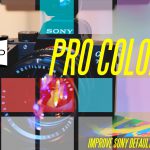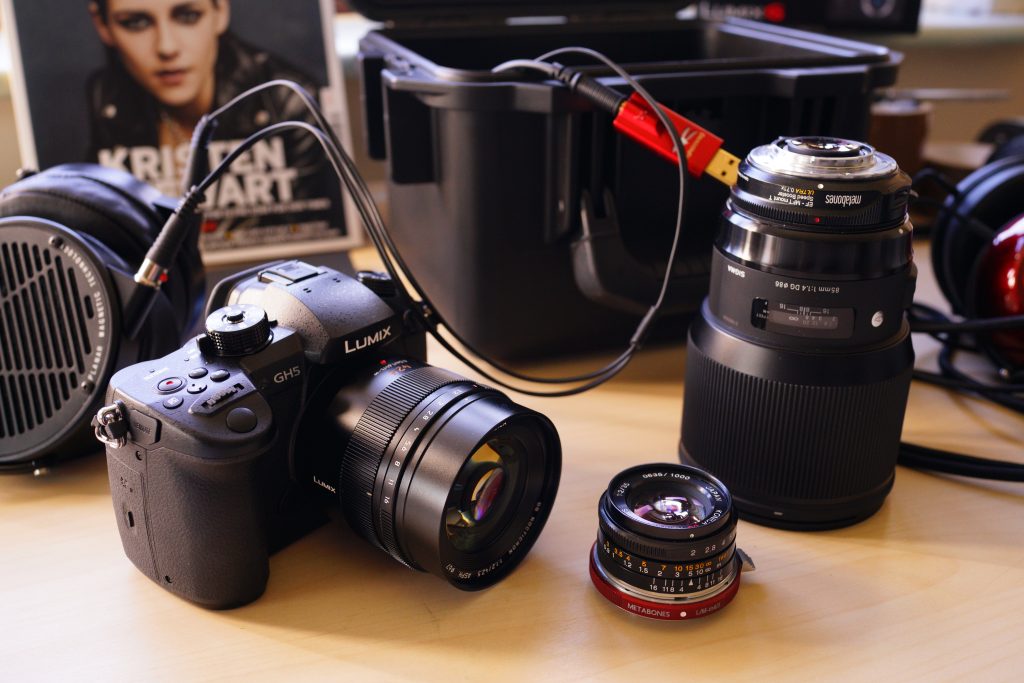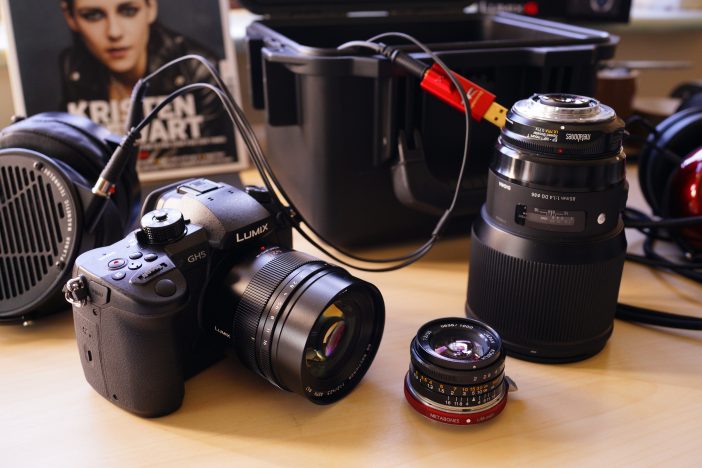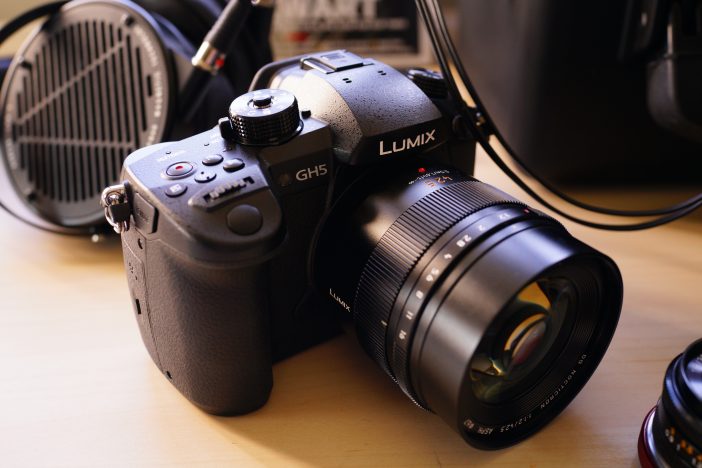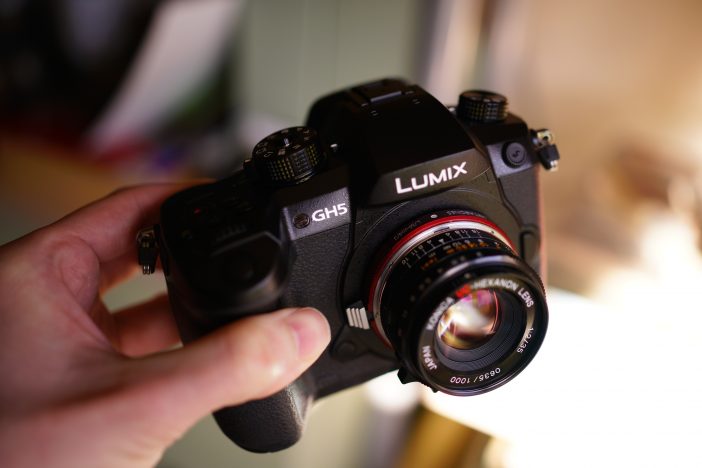Time to spend some quality time with the Panasonic GH5.
The wait is over and 3 years after the GH4 we have the highly anticipated new camera. In some ways an evolution but mostly, I’m glad to say a revolution.
This is going to be a popular camera and there may be a bit of a wait if you didn’t pre-order or did so late. I had a pre-order with Amazon UK and they couldn’t deliver it until MAY, so it took a helping hand from Proactive Broadcast Solutions and Panasonic in the UK to come to the rescue. My GH5 arrived a day earlier than expected and very professional service. Do check out Proactive’s review of the GH5 as well.
I have the Panasonic Noctictron 42.5mm F1.2 and Olympus 25mm F1.2, but also plan to use the Metabones Speed Booster. This is of the XL variety so it squeezes the image from a full frame lens down by 0.64x. What that does is make you forget that the GH5 isn’t a full frame camera. It becomes a 1.28x crop vs the Canon 1D X Mark II which is 1.4x crop in 4K and the 5D Mark IV which is 1.74x crop. The glass of this adapter goes as far into the mount as is physically allows and it doesn’t fit the Olympus E-M1 Mark II so I was very relieved to see it work perfectly with the Panasonic GH5. I am sure Metabones will make compatibility official once they test it fully themselves but until then, it might be sensible to wait a week or two in case any incompatibilities arise. With the new Sigma 85mm F1.4 ART on this adapter you have all the shallow depth of field you’ll ever need and you completely forget about the Micro Four Thirds 2x crop sensor compared to the Sony A7S II. So if you do still have a lot of Canon lenses and want the full frame look – in 10bit no less and 4K 60fps for 1/3rd of the price of a 1D X Mark II (and at a fraction of the file sizes) – no problem, here, have it.
The native lenses meanwhile maintain the small form factor advantage of the mirrorless system, in particular the recent F1.2 releases such as the Nocticron and Olympus 25mm which are a fraction of the size and weight of an F1.2 lens on full frame. With these the GH5 is quite a low light monster and can easily go into a situation where you’d be pushing ISO 12,800 on a full frame camera. The low light performance quibbles people have over this camera are a myth, you just need the right glass.
At first glance, autofocus on the native lenses is incredibly agile in stills mode on the GH5 (right up there with the Olympus E-M1 Mark II) and in video mode much improved from the GH4. Of course the new sensor is also a big leap from 3 years ago, far better colour and less noise, less rolling shutter, 5K full pixel readout for 4K video. Gone is the 2.3x crop. I am also extremely impressed with the EVF which compares favourably to the superbly sharp one in the Leica Q but is closer in size to the huge one on the Leica SL. We’re comparing to the best here and better than the Sony A7R II.
Also very nice to have that full sized HDMI and USB C, leap-frogging over USB 3 entirely from USB 2 on the old cameras.
In terms of styling, it is quite a functional looking camera to serve the ergonomics. Panasonic have gone for the futuristic-pro look and maintained the small body, no larger than the GH3.
When you consider we all wanted a bigger battery, larger EVF, full size HDMI, dual SD slots, powerful internal processor requiring larger heat sink and better build quality, that’s a miracle of engineering. The looks are quite utilitarian though and part of me misses the quirky Japanese charm of the GH1 and GH2 in multiple colour schemes, they certainly had more personality, but then again less utility. The GH5 is absolutely packed with features, I can’t even begin to summarise them on the first day of owning one. So stay tuned for more – much more, on the Panasonic GH5.
One thing I have noticed straight away is that the quality of the feed to the EVF and LCD is much higher than on the Sony cameras so you can manually focus very quickly and accurately without having to use the punch-in. I also like the addition of the joystick and favourites menu similar to a Canon 5D so you can very quickly access stuff which would otherwise be buried deep in the menus. The joystick makes it much easier to navigate options on the camera and has a lovely feel to it. It’s great for direct AF point selection and moving the focus magnification around the frame too. Peaking by the way works WAAAY better than on the GH4. The resolution is much better.
So far the in-body stabilisation appears similar to the best on the market from Olympus. It will need a fine tooth comb and a lot of geeks to see the differences. As I am a geek, I will of course touch on this in the review-proper.
And the image quality – all I can say is wow. The colours really pop in the standard profile and superb skin-tones so far. There’s some real magic going on there compared to the older GH4 and a non-EOSHD Pro Color tuned Sony body.
And now I am off to buy V-LOG.

